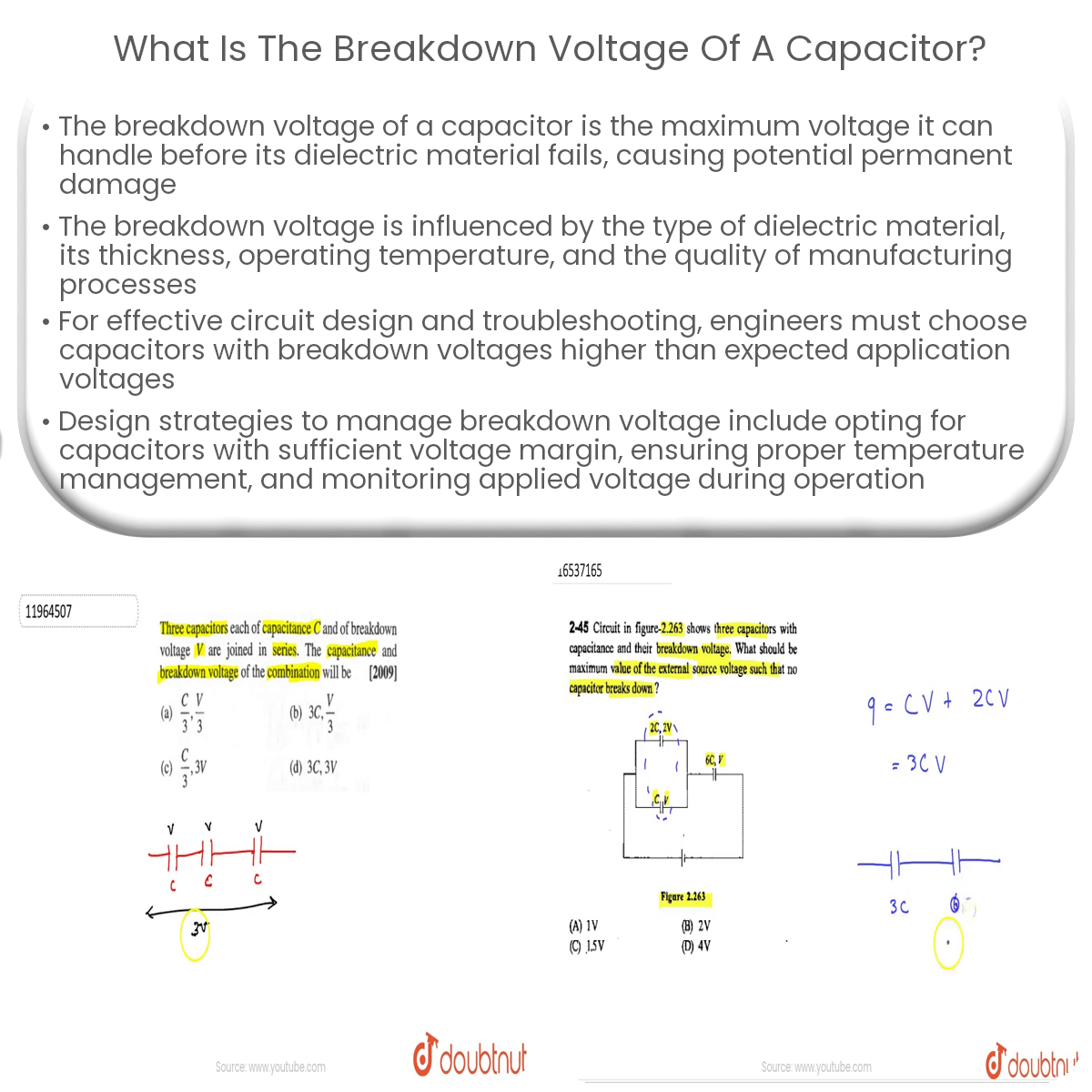The breakdown voltage of a capacitor is the maximum voltage it can withstand before its dielectric material fails, causing permanent damage.
Breakdown Voltage of a Capacitor
The breakdown voltage of a capacitor is a critical parameter that specifies the maximum voltage the capacitor can withstand before its dielectric material fails. When the voltage applied to a capacitor exceeds the breakdown voltage, it leads to dielectric breakdown, causing the capacitor to fail, and often resulting in permanent damage.
Factors Influencing Breakdown Voltage
The breakdown voltage depends on several factors, including:
- Dielectric Material: The type of dielectric material used in a capacitor significantly affects its breakdown voltage. Some materials can withstand higher voltages than others, offering better insulation and voltage resistance.
- Dielectric Thickness: The thickness of the dielectric layer is also crucial in determining the breakdown voltage. Thicker dielectric layers can withstand higher voltages, but they also result in a lower capacitance value.
- Operating Temperature: High temperatures can cause the dielectric material to degrade, reducing its insulating properties and lowering the breakdown voltage. It’s essential to consider the operating temperature range when selecting a capacitor for a specific application.
- Manufacturing Quality: High-quality manufacturing processes and materials can lead to a more consistent and higher breakdown voltage across a batch of capacitors.
Importance of Breakdown Voltage
Understanding the breakdown voltage of a capacitor is vital when designing and troubleshooting electronic circuits. Engineers must select capacitors with a breakdown voltage higher than the voltage they expect to encounter in the application. This ensures the capacitor operates safely and reliably without the risk of failure or damage to other components.
Exceeding the breakdown voltage not only causes the capacitor to fail but also potentially creates a short circuit, leading to more severe consequences for the overall circuit.
Managing Breakdown Voltage in Capacitors
Designers can take several steps to manage the breakdown voltage in capacitors:
- Choose capacitors with a sufficient margin above the maximum expected operating voltage.
- Ensure proper cooling and temperature management in the circuit design to avoid dielectric degradation due to heat.
- Monitor the voltage applied to capacitors during operation and take corrective action if needed to avoid exceeding the breakdown voltage.
By understanding and managing the breakdown voltage of capacitors, engineers can ensure the longevity and reliability of electronic circuits and devices.


